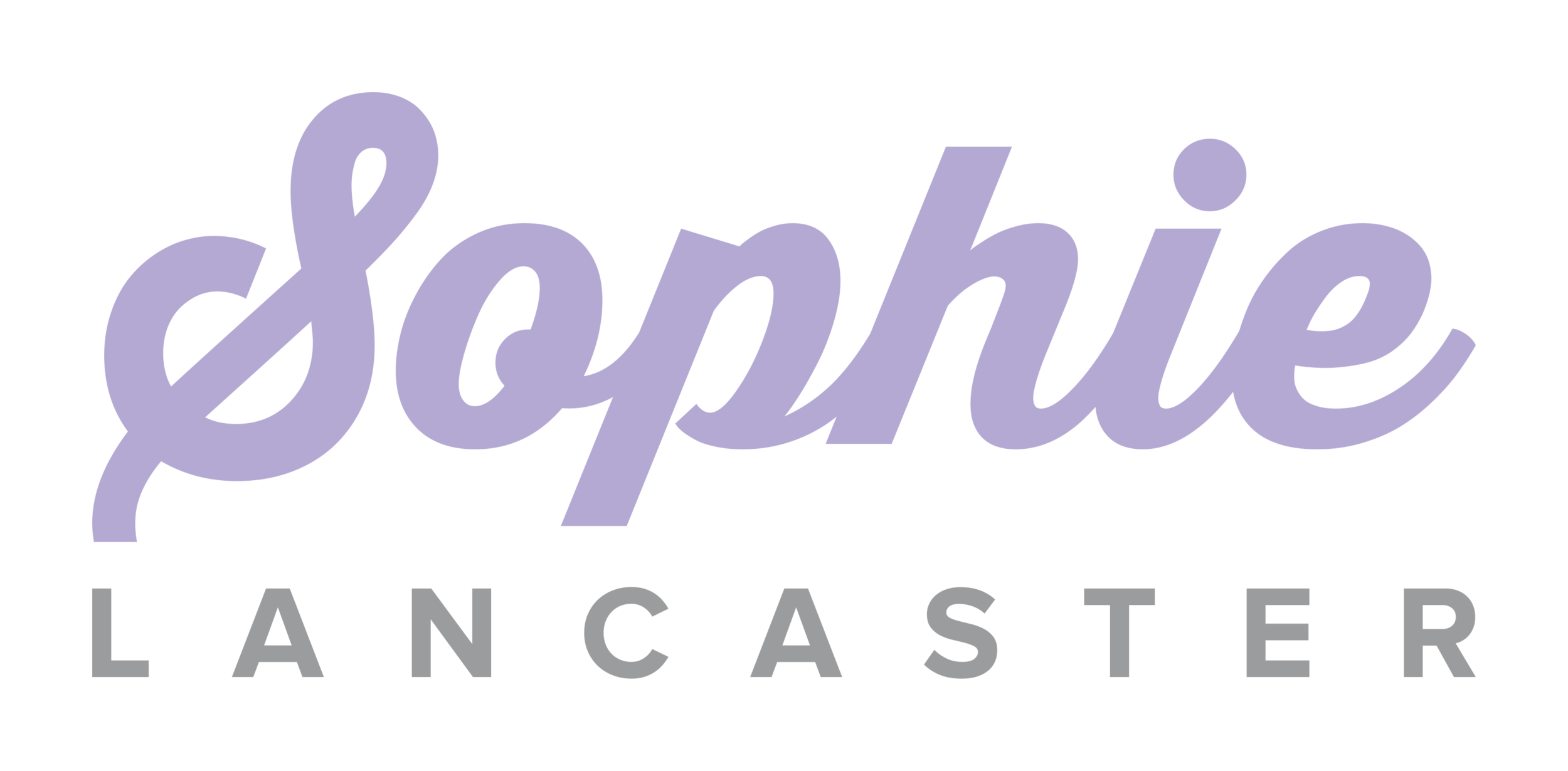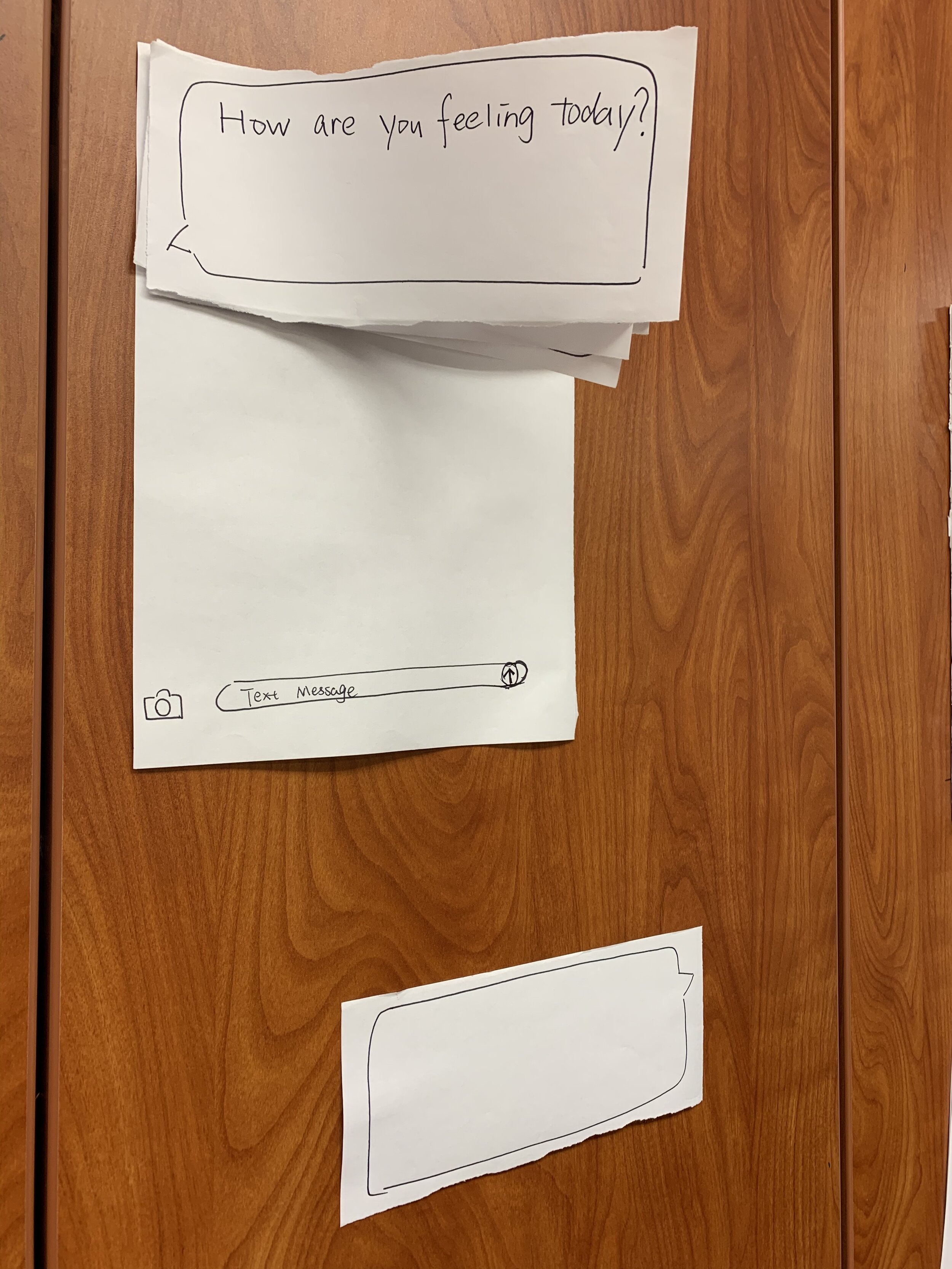
Hopelab
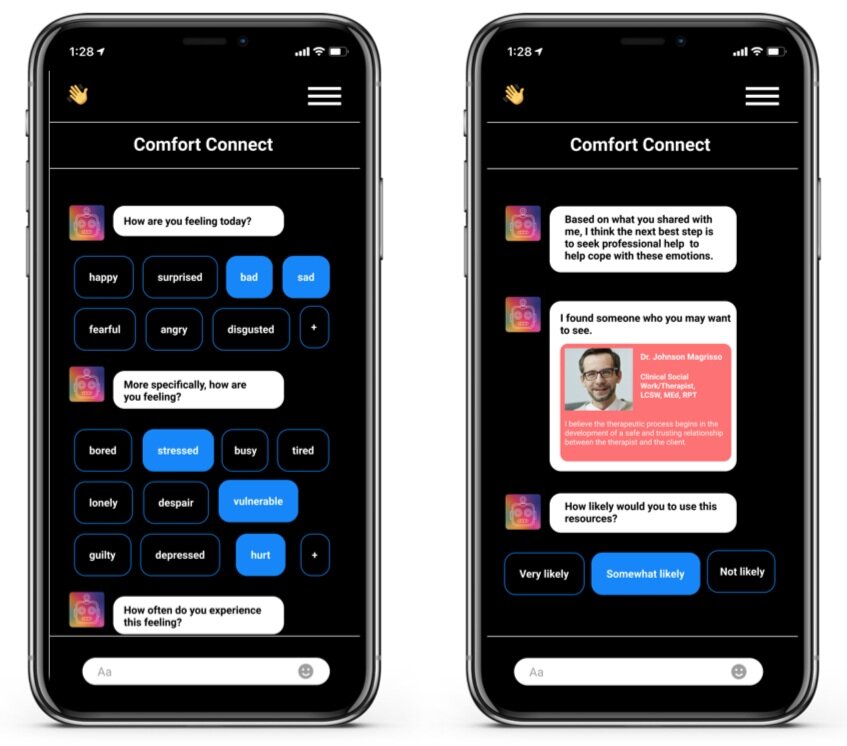
Hopelab
For this project we worked with a social innovation lab, Hopelab, located in San Francisco whose mission is to create behavior changing technology to help teens and young adults live happier, healthier lives. Specifically we were looking at the following problem statement: How might we design a service that provides support for LGBTQIA+ young adults?
Skills Used
Discovery Research
Gaining a More Comprehensive Understanding of the Space
At the start of this project my team was told to focus on digital peer-to-peer resources used by LGBTQIA+ young adults, particularly focusing on the observer using these platforms. In order to better understand this segment we created stakeholder and ecology maps. With the stakeholder map we mapped out the relationships between different parties in our ecosystem and placed a specific focus on the benefits of the primary user. With our ecology map we broadened this scope and did some research into questions of where the services in this segment are being used, why they are being used, when they are being used, how they are being used and who is using them. Learnings from these maps, including the role of other participants on the platforms and the expansiveness of the platforms, inspired our discussion guide for our 4 user interviews with queer young adults. We conducted these interviews to learn more about the coming out experience and their use of digital peer-to-peer resources during this time. After gathering all of our findings we created a journey map that outlined the different stages a queer young adult must go through when they are coming out. From our journey map we took away the key insight that queer young adults experience very conflicting and hard to process emotions during this time.

Stakeholder Map
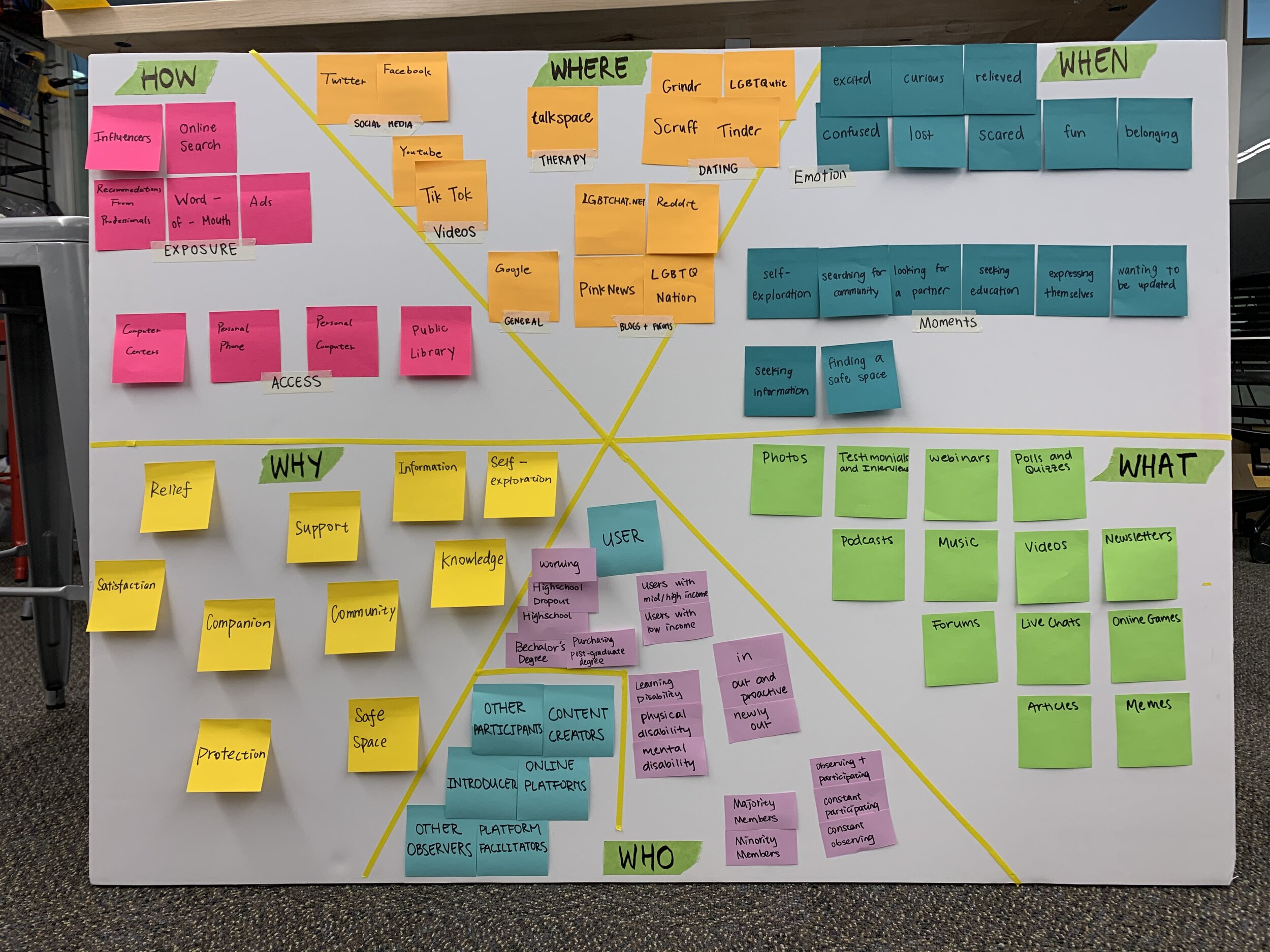
Ecology Map
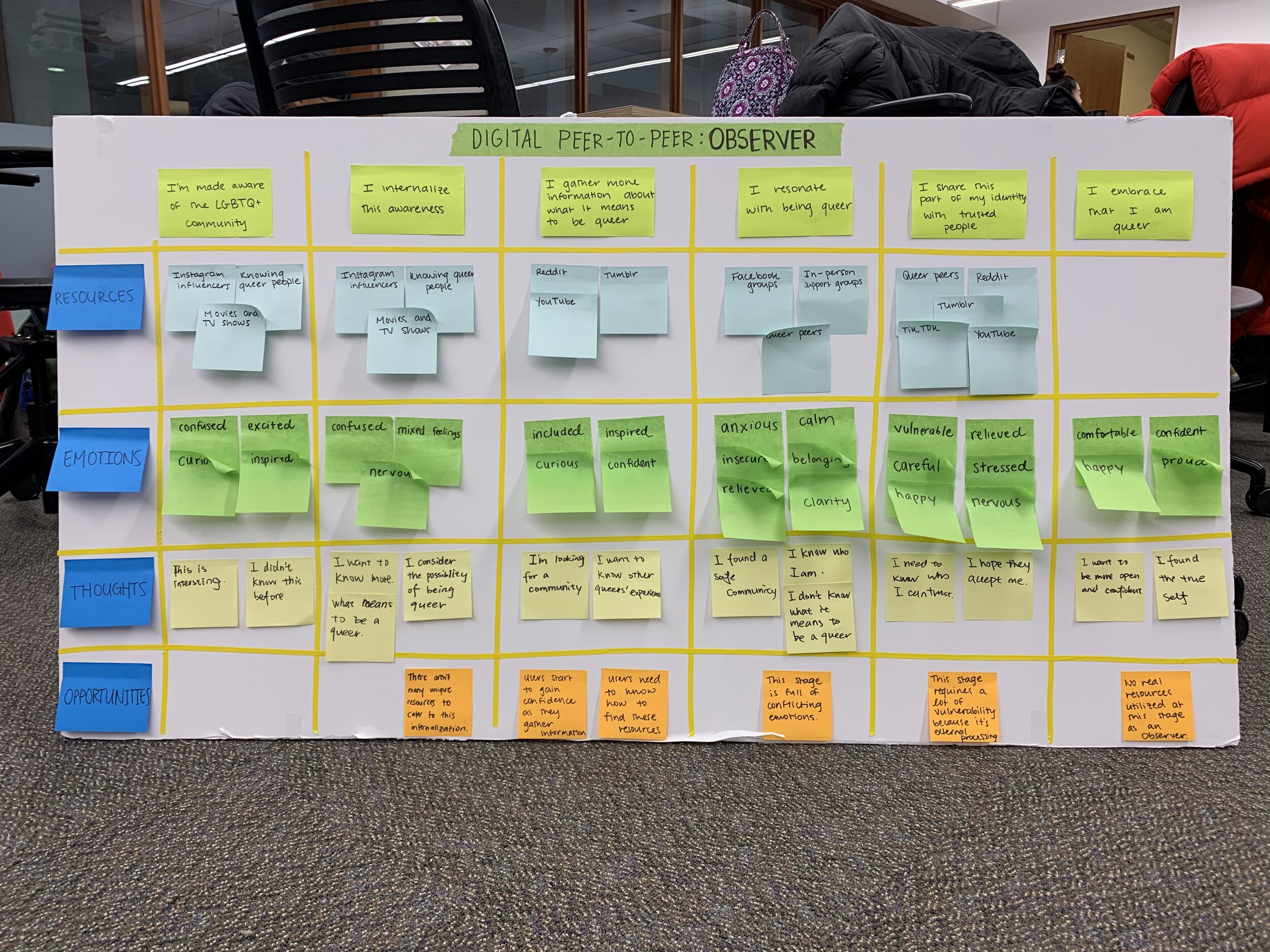
Journey Map
Concepting and Ideation
Using Insights from Journey Mapping to Inform Concept Creation
From the insight we uncovered through journey mapping and based on feedback from design reviews, our team created a final point of view (POV) that we used moving forward. The POV that we created was: queer high school and college students who frequent social media platforms need a way to process and track their emotions as they are coming out because they often have conflicting emotions, such as anxiety and clarity when learning more about their identities. This POV influenced the creation of three specific design directions that we presented to our clients in San Francisco. The design directions included an emotional tracking feature on social media platforms, a way to tell people’s stories on social media and make them searchable by emotional tags and a more lighthearted approach that allows queer young adults to search for LGBTQIA+ memes using similar emotional tags. When presenting these to our client we got the feedback that they were particularly attracted to our emotional storytelling idea but that we would need to do further research into things such as tracking emotional triggers, how to make the storytelling relatable and different ways of asking people about their emotions since people often have a hard time explaining their feelings.
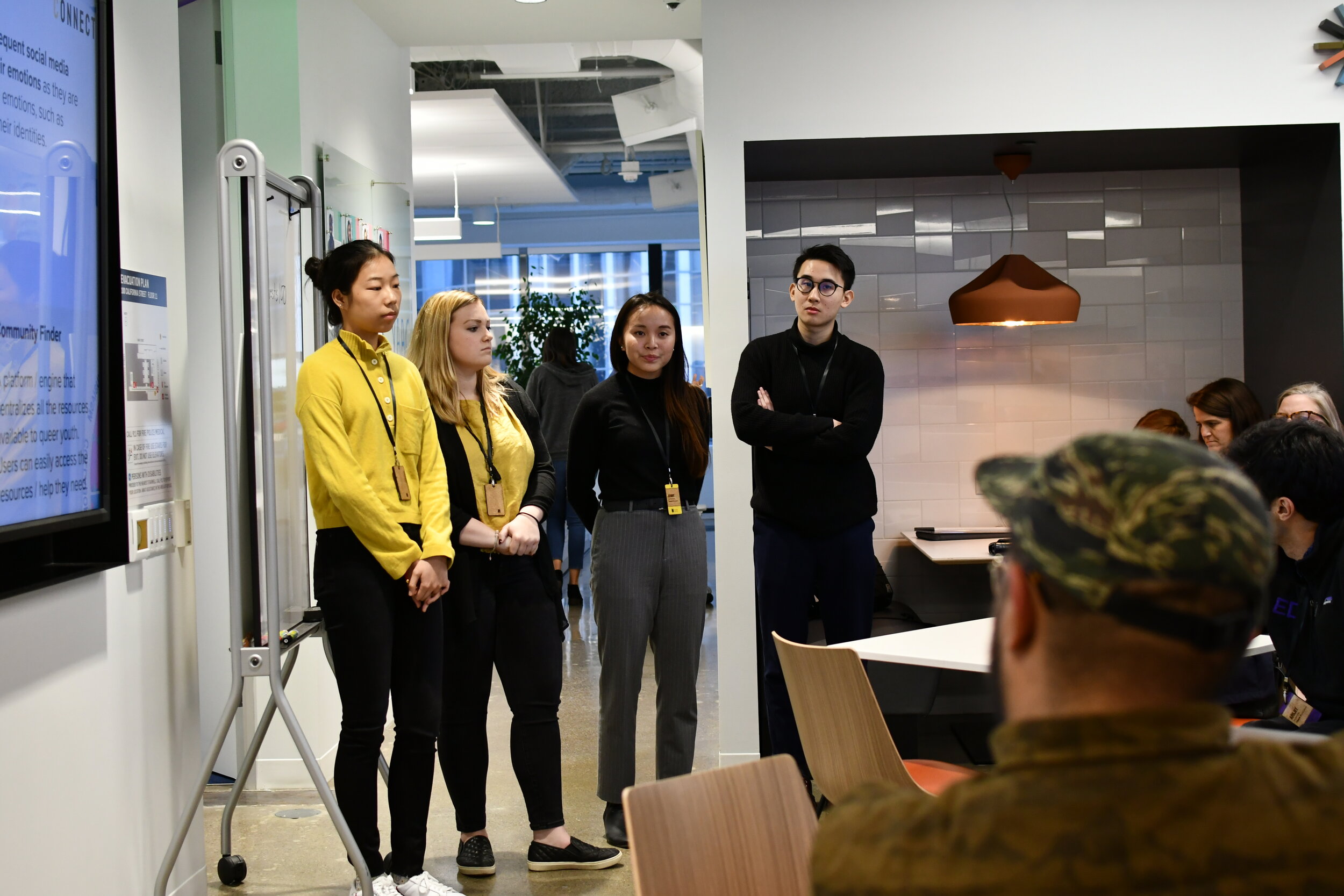
Presenting to Hopelab in San Francisco
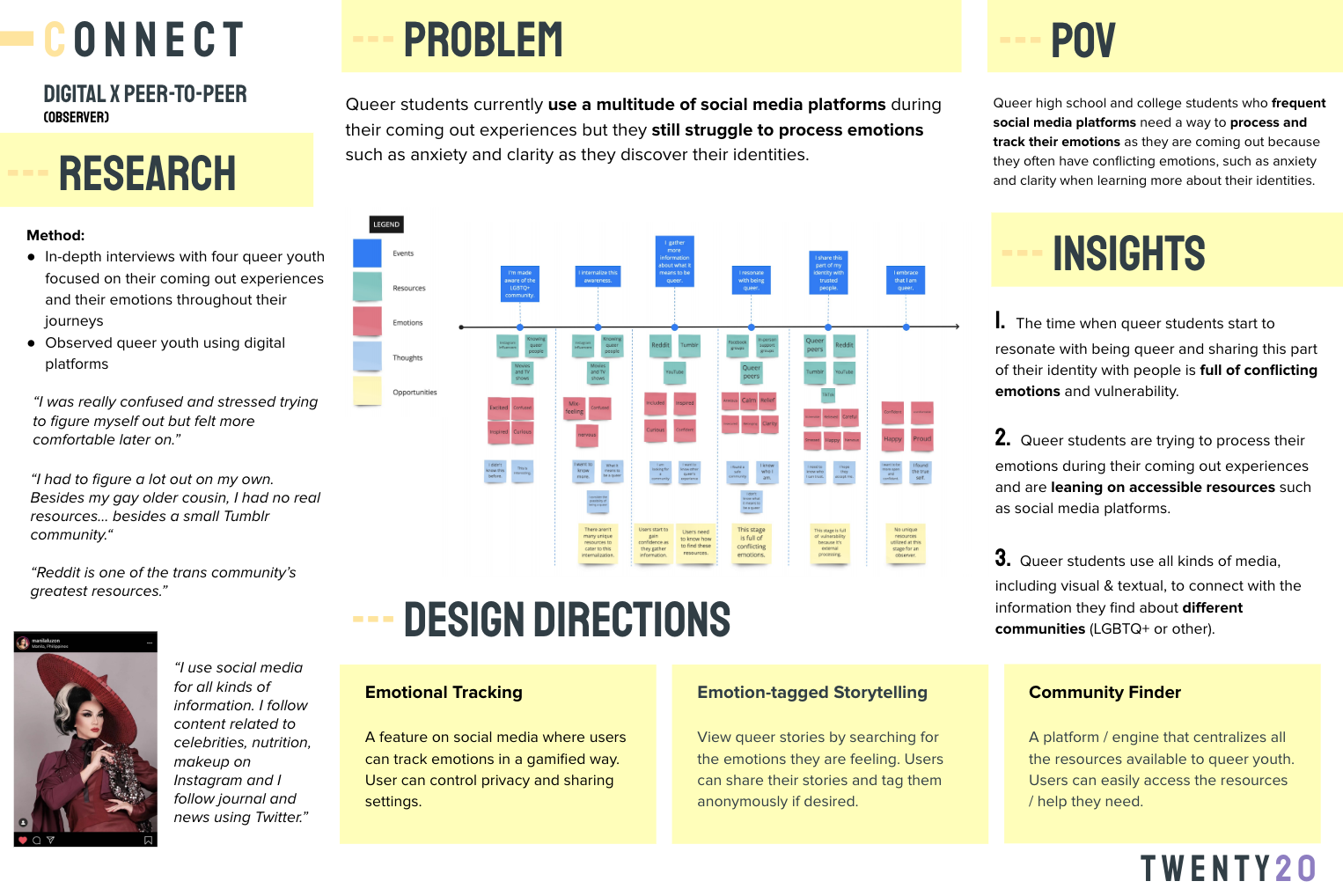
Midterm Poster for Client Presentation
Design and Prototyping
Emotional Exploration
The feedback we received from Hopelab influenced a first round of four sacrificial prototypes. Each of these prototypes had a very specific learning objective that they were designed for. For example, we needed to learn more about what questions people can and are willing to answer regarding their emotions and so we created a texting prototype in which a “text” would be sent with a question and the user could choose to write their answer or not respond. We also created a digital prototype that asked users to describe a variety of different emotions using whatever medium they felt appropriate for that emotion. This prototype was designed for the purpose of learning more about content needing to be context specific. We presented these sacrificial prototypes in class and got feedback about making the prototypes digital and combining them into a more seamless interaction. This feedback led us to the creation of our final sacrificial prototype which was a scenario-based emotional exploration. Our final digital prototype was tested with 6 users and led to insights that informed our final design. For example, we learned that the stories and resources we share should not exacerbate the user’s negative emotions. Additionally, allowing flexibility and customization when it comes to asking users about their emotions is really important.
Final Solution
Recommend Emotion Specific Resources
These insights led to the creation of our final service: A chatbot service that recommends different resources to users based on a personal emotional exploration. After coming up with the final service it was important that we flushed the idea out by creating a comprehensive journey map and service blueprint.

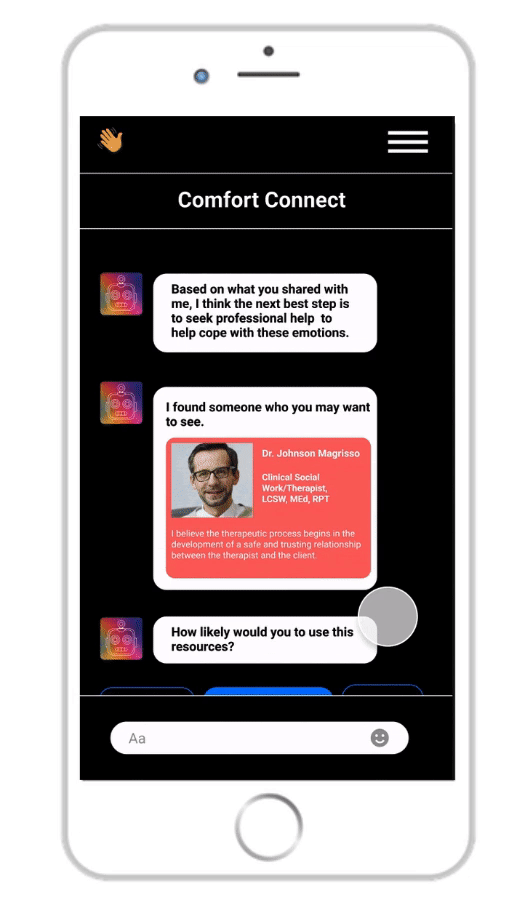
Evaluative Research
Relatability and Ease Lead to A Positive Response
When putting our final prototype in front of users we got great feedback about the value of the service. Users really liked the idea of being able to hear relatable stories and be presented with relevant resources based on an in-depth emotional exploration. Additionally, users did not find the process of the emotional exploration too cumbersome or invasive and liked the ability to customize answers and skip questions that they felt uninterested in answering.
Potential Impact / Future Steps
Like the feedback we received from users, we received very positive feedback from our client regarding our service. They found our insight surrounding the relationship between different emotions and their intensity to the ability to properly express them using different mediums very interesting. Overall, this project was a success and if Hopelab decides to implement our service into their chatbot then we believe many LGBTQIA+ young adults would benefit.
Key Takeaways
There is true value in mapping out all of the stakeholders and the ecosystem before designing a service
Sacrificial prototypes can be really useful and can teach you a lot
Having clear lines of communication with the client is crucial
Taking opportunities to design for unfamiliar communities will help you grow as a designer
Contributions
I would like to say a special thank you to my project team members, Jenny Nguyen, Tony Tian and Janice Zhou, my professors Amy O’Keefe and Liz Gerber and those who contributed through user research.

